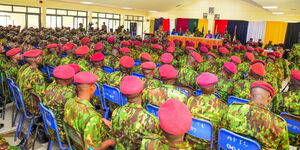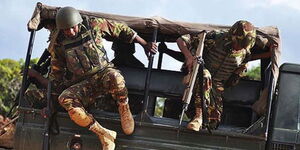Inside Al Shabaab: the history of Al-Qaeda's Most Powerful Ally, a book by Harun Maruf and Dan Joseph provides a vivid look at how the jihadist fundamentalist group based in East Africa conducts their abduction operations in Kenya.
The kidnapping of the two Cuban doctors- Assel Herera Correa and Landy Rodriguez based in Mandera, Kenya on April 12, 2019, was one among a long list of kidnapping operations carried out within Kenyan borders.
Details gathered from the book and the Daily Nation revealed that most of the al Shabaab commanders walk into Kenya in the dead of the night with a small unit of skilled operators during such missions.
"In November 2008, al Shabaab commander Mohamed Toora-Toorow , in the company of 24 men, left Somalia at 11pm and walked several kilometres into Kenya," stated an excerpt of the book.
Toora -Toorow was on a mission to kidnap two Italian nuns- Maria Teresa Olivero and Caterina Giraudo, who were based in a border town in Mandera county.
The commander divided his troops into 4 units, each with a specific task aimed at ensuring mission success.
Unit 1 was tasked with the actual abduction of the nuns, unit 2 was tasked with monitoring Kenya Defence Force's (KDF's) El Wak barracks which was a stone-throw away from the location where the abduction was to take place, with unit 3 and 4 tasked with hijacking vehicles and securing an escape route respectively.
Once the nuns were kidnapped, unit 2 opened fire on the barracks resulting in absolute chaos which unit 3 used to secure the two pick-ups and a land rover that they used to pick up the rest of the team and bolt back to Somalia.
Toora-Toorow later revealed that planning for the operation lasted for about 2 months and ended up bagging a Ksh15 million ransom for the nun's release.
The jihadist extremist group has reportedly been using this as a blueprint during their numerous other kidnapping operations, preferring northeast and coastal counties bordering Somalia where it's easier to cross in and out unnoticed.












